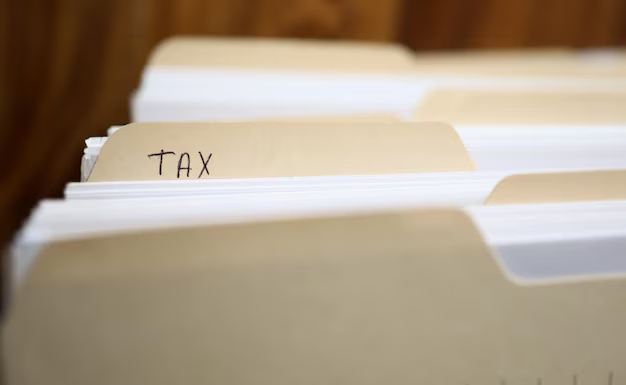Understanding Your Property Tax Refund in Minnesota: What You Need to Know
Navigating the ins and outs of property tax refunds in Minnesota can feel like a daunting task. As homeowners, it's essential to understand how and when to expect your property tax refund. Whether you're new to property ownership or a seasoned homeowner, having a clear grasp of this process can ensure you make the most of your entitlements.
What is a Property Tax Refund?
A property tax refund in Minnesota is part of a state initiative to reduce the overall property tax burden on qualifying homeowners. It's designed to help those whose property taxes make up a significant portion of their household income. Unlike tax deductions or credits applied through federal income taxes, this refund is a state-level benefit aimed at offering financial relief where property taxes represent a disproportionate amount of your income.
Eligibility Criteria for the Refund
To qualify for the property tax refund, known locally as the Property Tax Refund (PTR), you must meet specific eligibility criteria:
- Primary Residency: The property in question should be your primary residence.
- Income Limitations: The total household income, which includes taxable and non-taxable forms of income, must fall within certain limits established annually by the Minnesota Department of Revenue.
- Property Classification: Different types of properties, such as farms or residential, could have varied eligibility standards.
Key Dates and Timelines
Understanding when to expect your refund largely depends on your compliance with the submission deadlines and the processing timeline of the Minnesota Department of Revenue.
Filing Your Taxes
The period to file your Minnesota property tax refund typically begins in February and aligns with the general tax season:
- Filing Deadline: The latest you can file is August 15th for the previous year’s taxes. Submissions beyond this date generally won't qualify for a refund unless specific exceptions and extensions apply.
- Optimal Timing: Filing as early as the tax season starts can help in receiving your refund sooner.
Receiving Your Refund
The timeline for when you will receive your property tax refund can vary:
- Processing Time: Once you submit, the typical processing time can range from six to eight weeks.
- Status Check: You can check the status of your refund online through the Minnesota Department of Revenue's system by providing your Social Security number and property ID or using your tax return details.
Factors Affecting Refund Timing
Several factors can influence when you see the refund deposited into your account:
- Errors in Submission: Mistakes during the filing can delay processing. It’s wise to double-check all entries before submission.
- Direct Deposit Setup: Opt for direct deposit for quicker access to your funds rather than waiting for a mailed check.
- Volume of Applications: Processing can take longer during busy periods like mid-April when many taxpayers file.
Enhancing Your Refund Experience
Tips for a Smooth Refund Process
Maximize the chances of receiving your refund on time and reduce stress with these tips:
- Organize Financial Documents: Keep your property tax statement, previous tax returns, and any income records handy for efficient filing.
- Use the Homestead Credit: Ensure you're claiming the homestead credit, which is essential for eligibility.
- Professional Assistance: Consider hiring a tax professional if navigating the forms seems challenging. Their expertise can prevent errors that delay refunds.
- Electronic Filing: Utilize electronic filing to streamline the process and facilitate a faster refund.
Common Mistakes to Avoid
Avoid the following pitfalls to ensure a seamless refund process:
- Incorrect Personal Information: Simple errors in name or Social Security details can lead to processing snags.
- Miscalculation of Income: Misreporting your total household income may disqualify you from receiving a refund.
- Late Filing: Missing the deadline could result in losing out on the refund entirely.
Related Subtopics: Understanding Other Property Tax Benefits
When discussing property tax refunds, it’s also beneficial to understand related programs and credits available in Minnesota:
Special Property Tax Refund
This is a separate refund opportunity for those who experienced a large increase in property taxes from one year to the next:
- Eligibility: No income limitations apply. Your property taxes must have increased by more than 12% and by at least $100.
- Filing Similarity: File this alongside your regular property tax refund.
Homestead Exclusion
Beyond refunds, this benefit reduces the taxable market value of your home, which can lower your property taxes:
- Eligibility: Your home must be classified as residential homestead and serve as your primary residence.
- Impact: This benefit directly reduces your property tax burden by altering the assessed value on which taxes are based.
Key Takeaways for Minnesota Homeowners
To synthesize the information and provide a useful snapshot, here’s a quick guide to managing your property tax refund and enhancing potential savings:
- 📅 File before August 15th to ensure eligibility, with a submission at the start of tax season recommended for quicker turnaround.
- 💻 Opt for electronic filing and direct deposit to maximize speed and efficiency.
- 📑 Ensure accuracy in your application to avoid processing delays due to errors.
- 💡 Explore additional benefits like the Special Property Tax Refund and the Homestead Exclusion for broader savings.
Understanding these elements not only helps you accurately estimate when to expect your property tax refund but also equips you with strategies to optimize tax-related savings, offering a clearer financial outlook. Reflect on these insights to take proactive steps in managing and anticipating your property tax refunds effectively.

Related Topics
- Can i Get a Property Tax Refund
- Can i Pay Property Tax Online
- Can Property Tax And Condo Fee Be Deducted In Maryland
- Can You Claim Your Property Taxes On Your Income Tax
- Can You Totally Not Pay Property Tax Texas
- Do Renters Pay Property Tax
- Do Veterans Pay Property Tax In Texas
- Do You Pay Property Tax Monthly Or Yearly
- Do You Pay Property Tax On a Condo
- Does Florida Have Property Tax